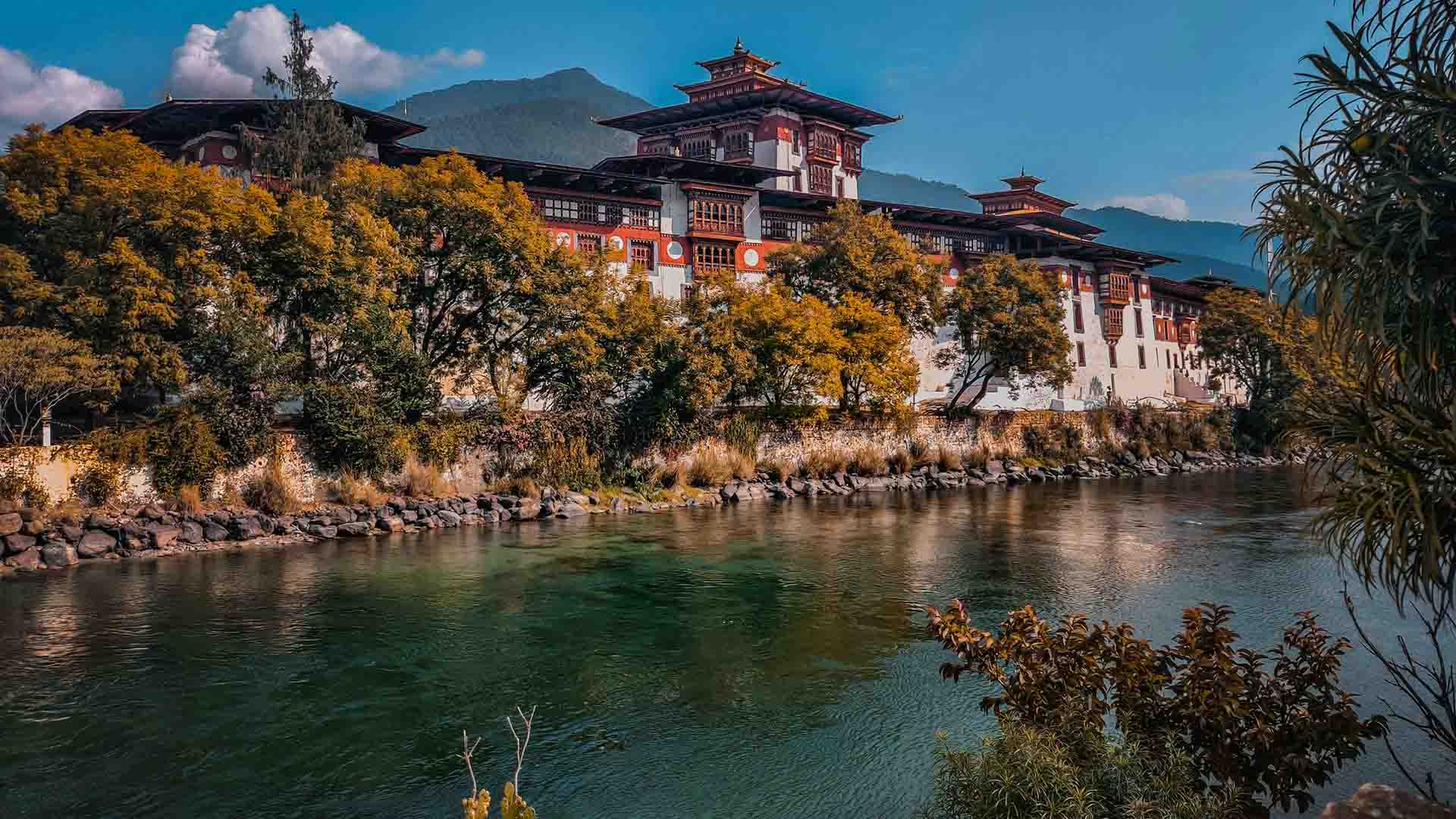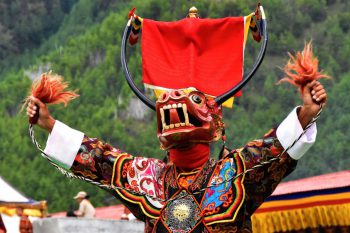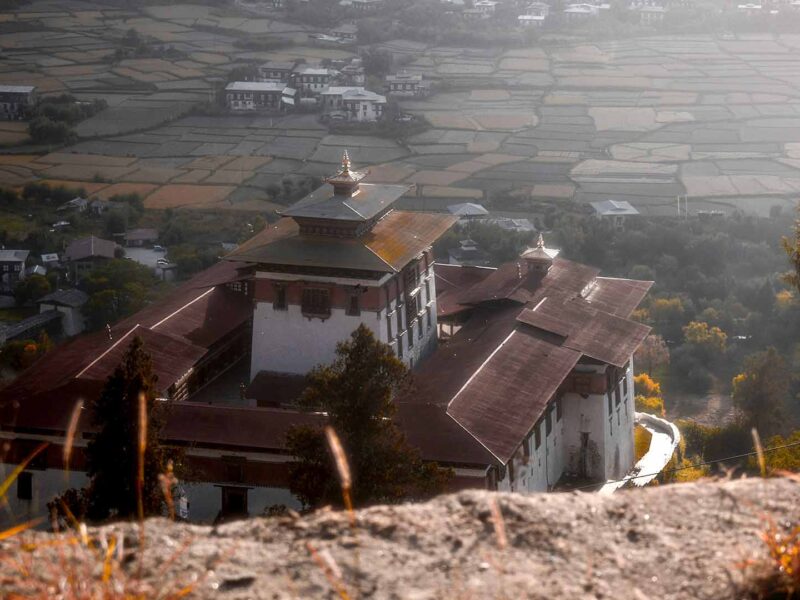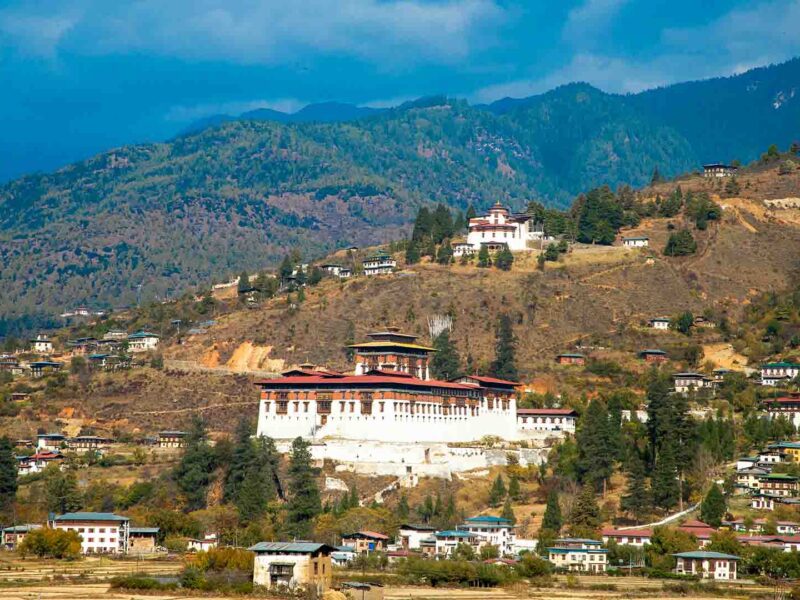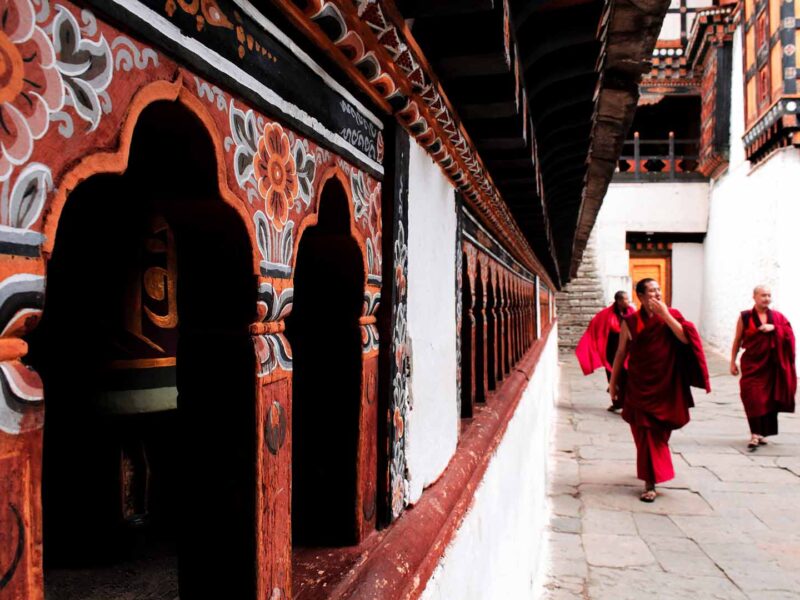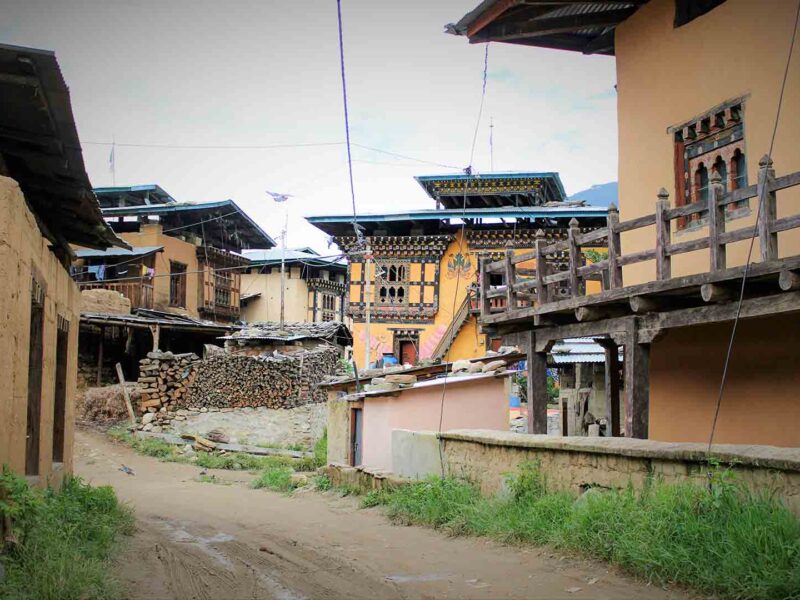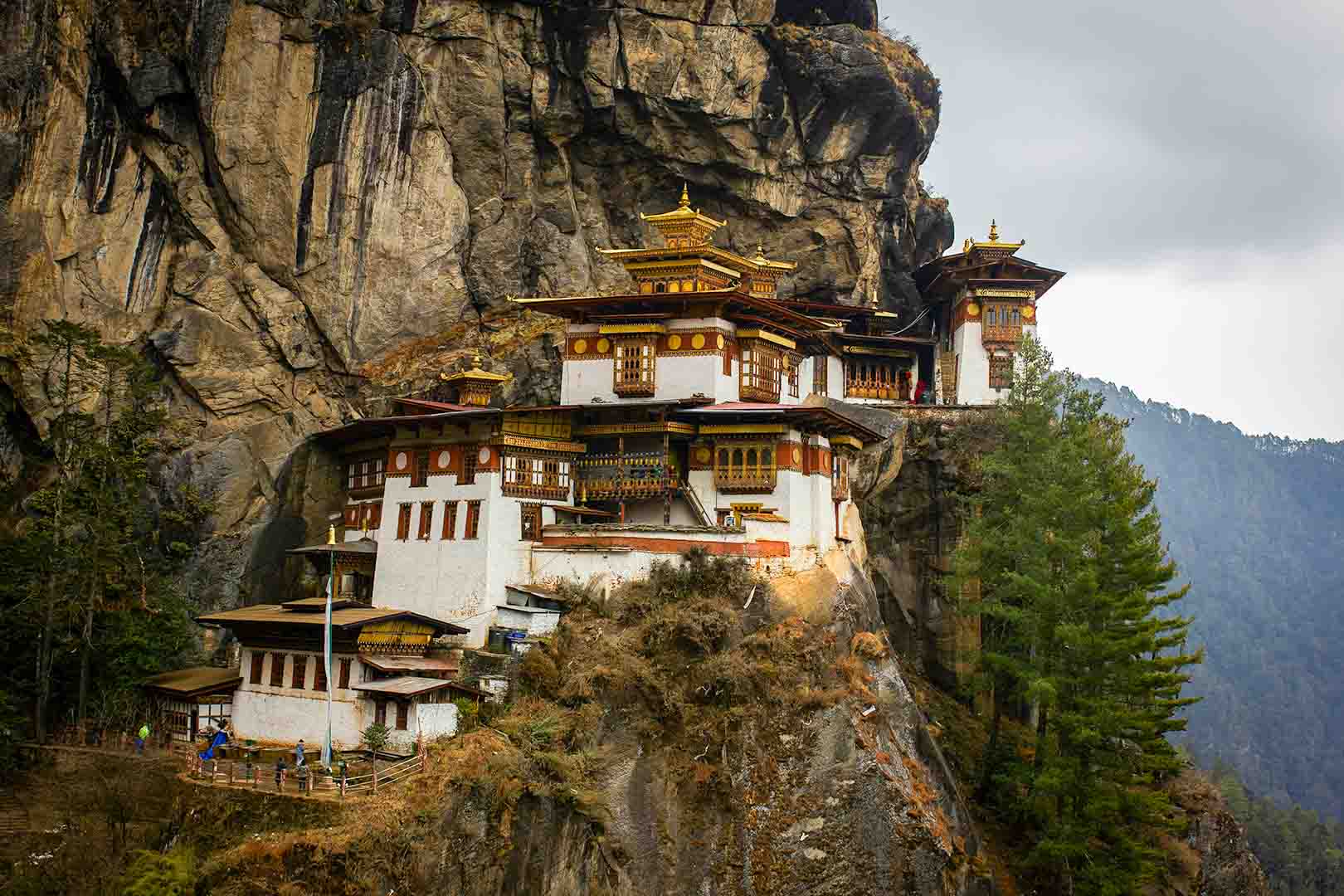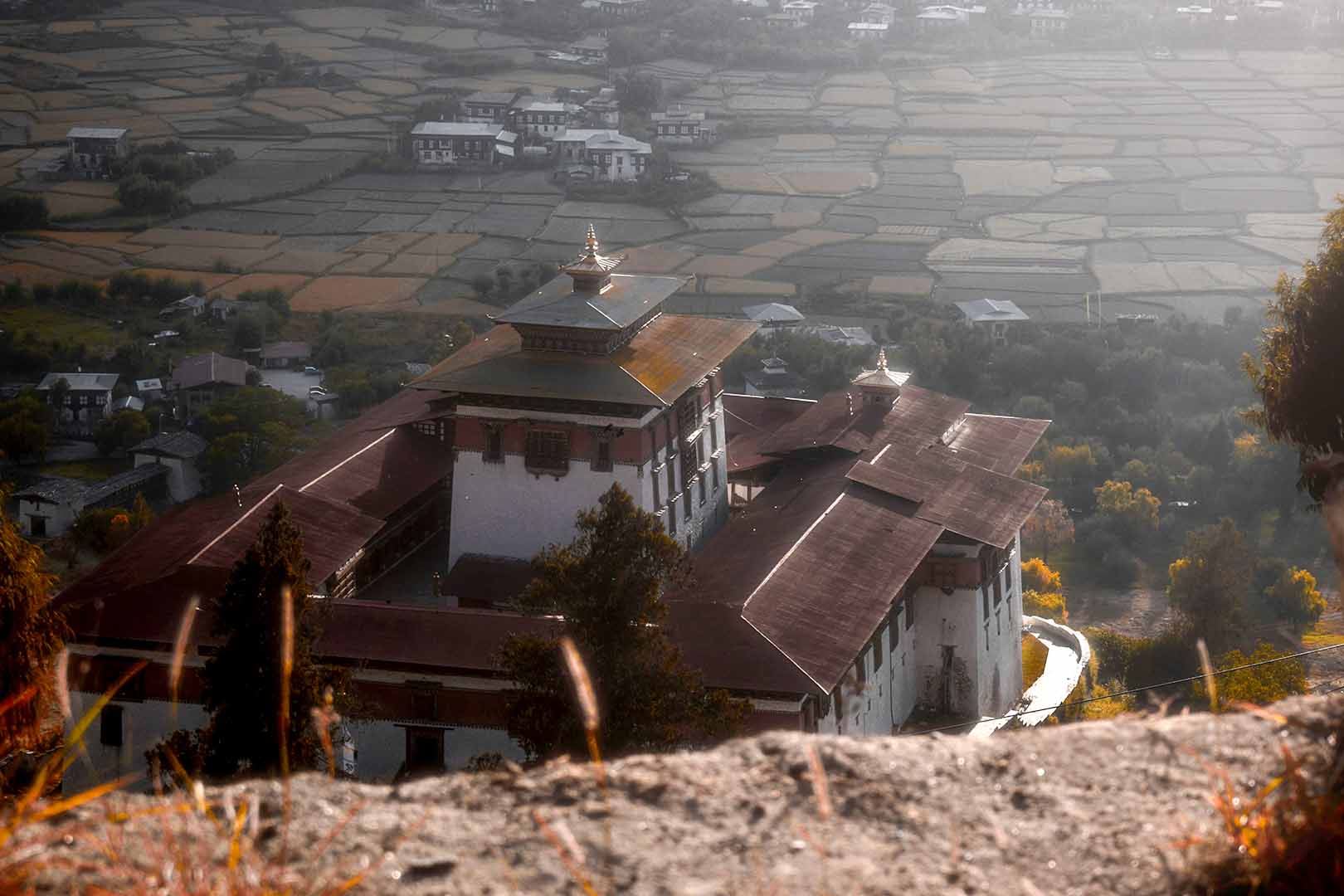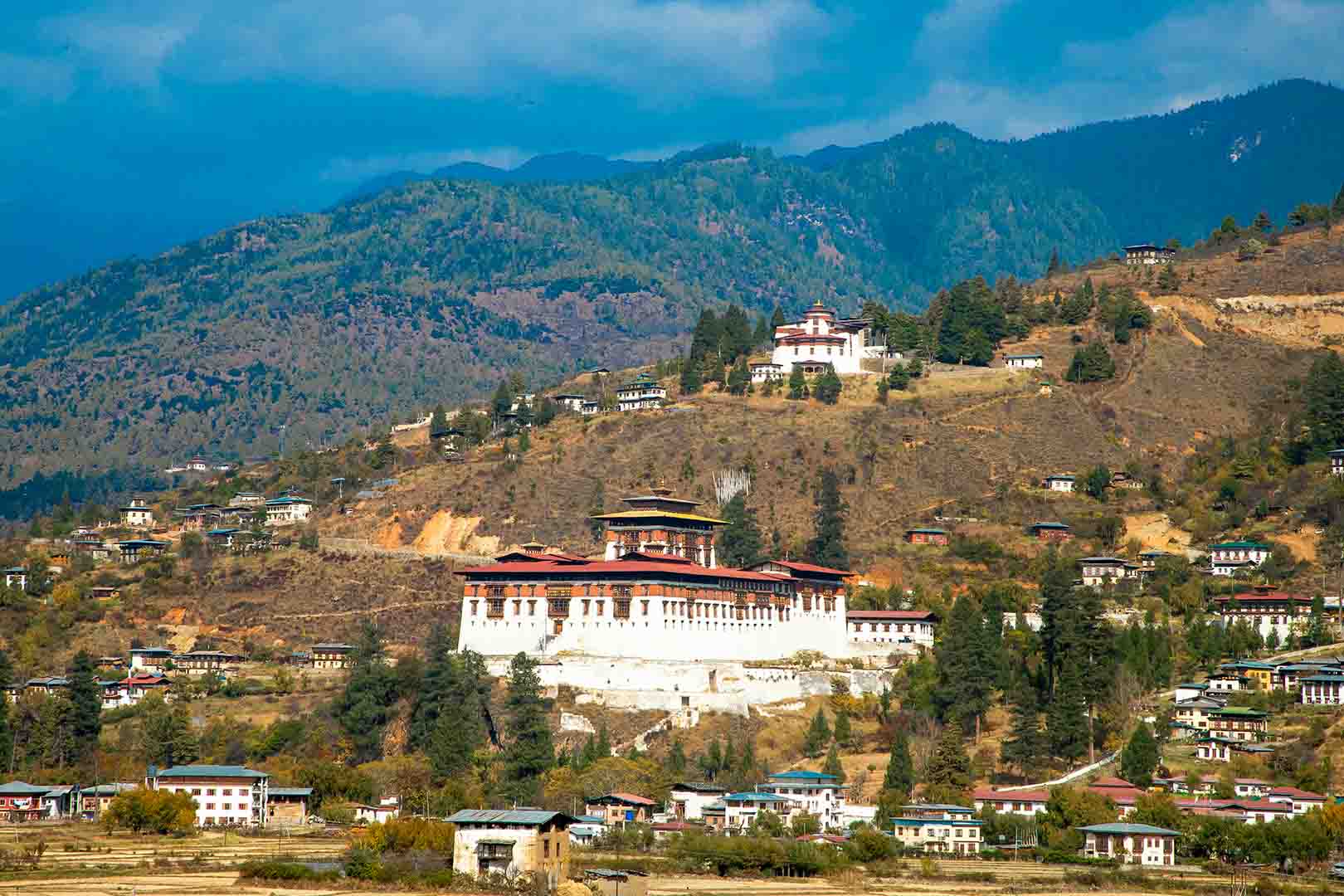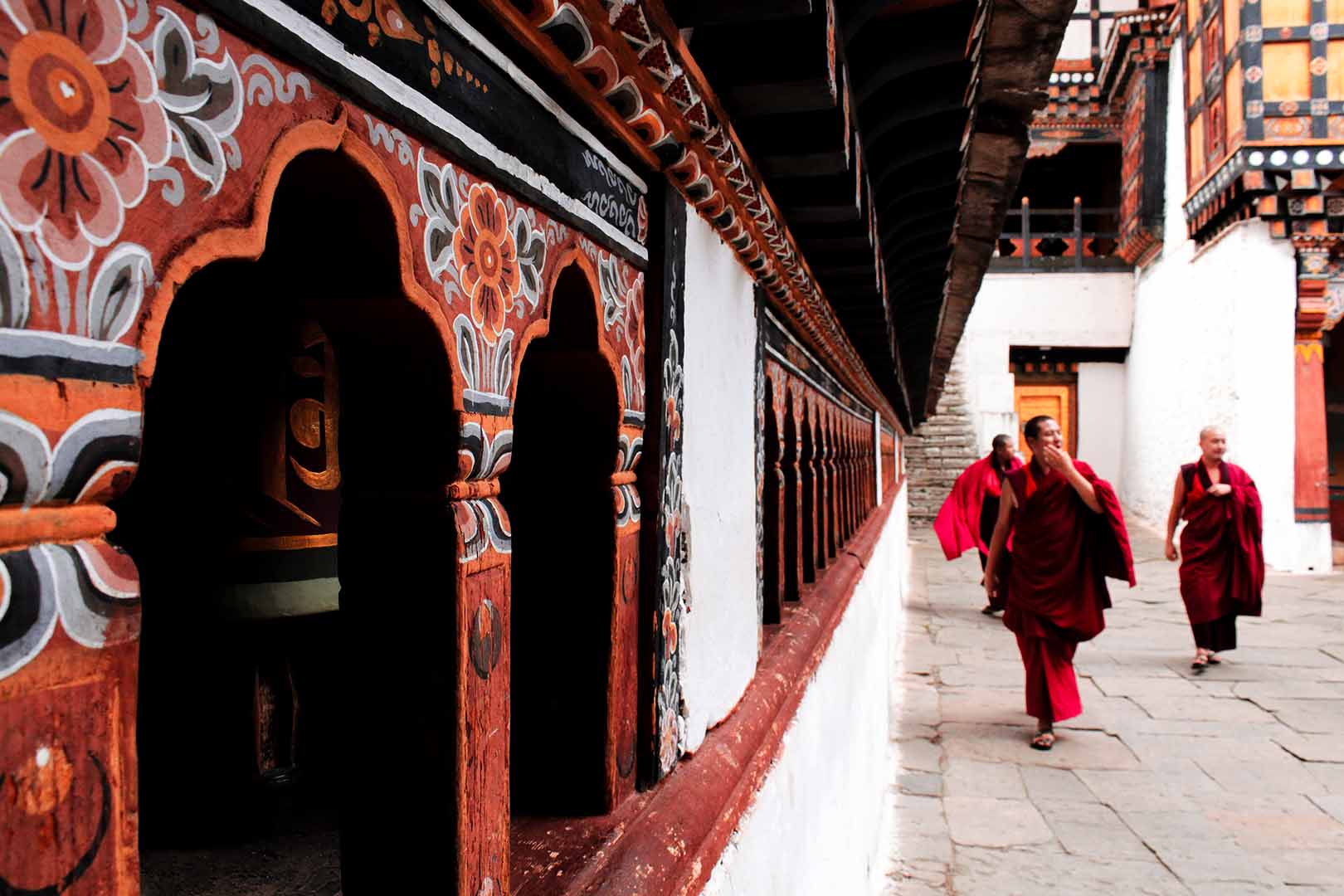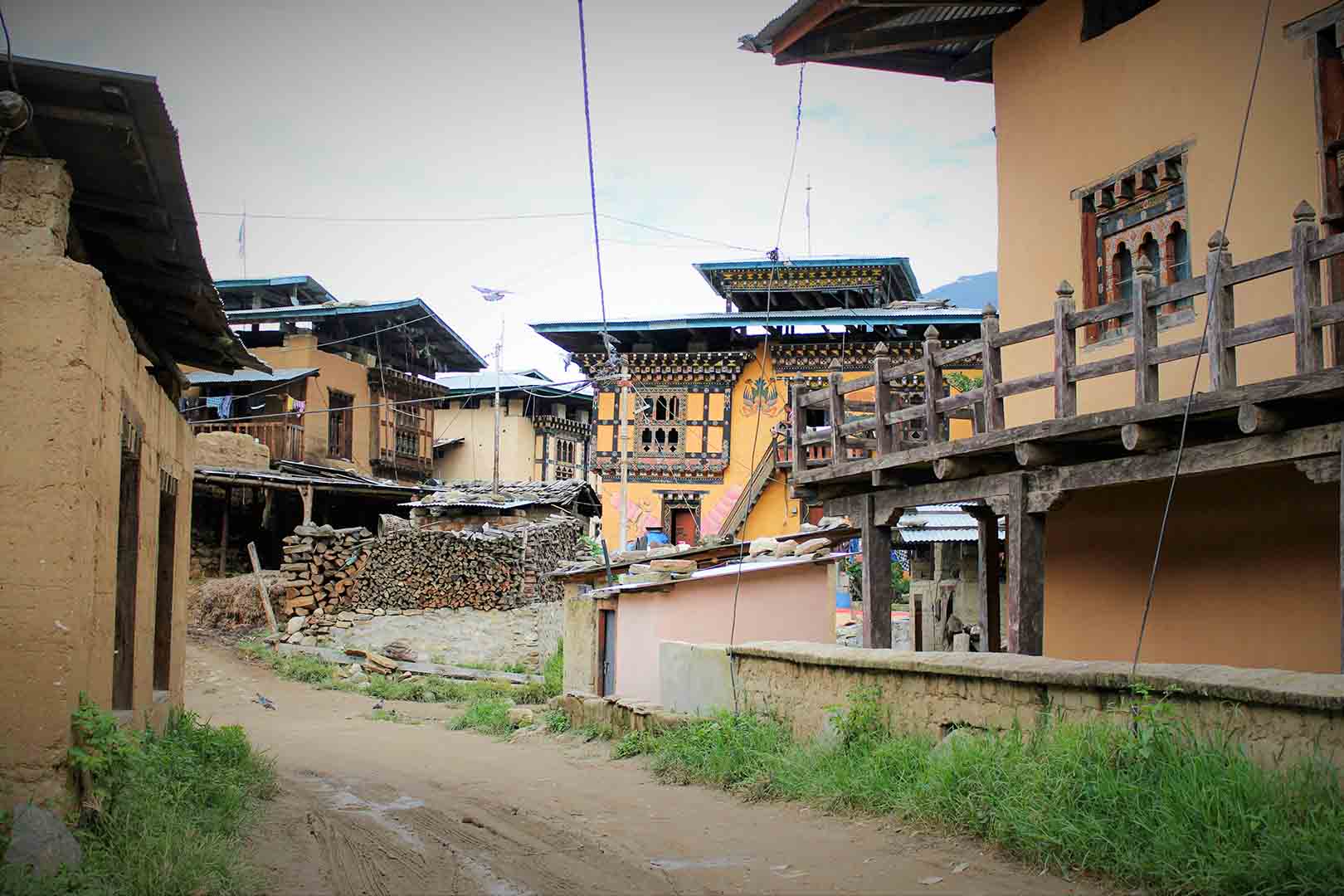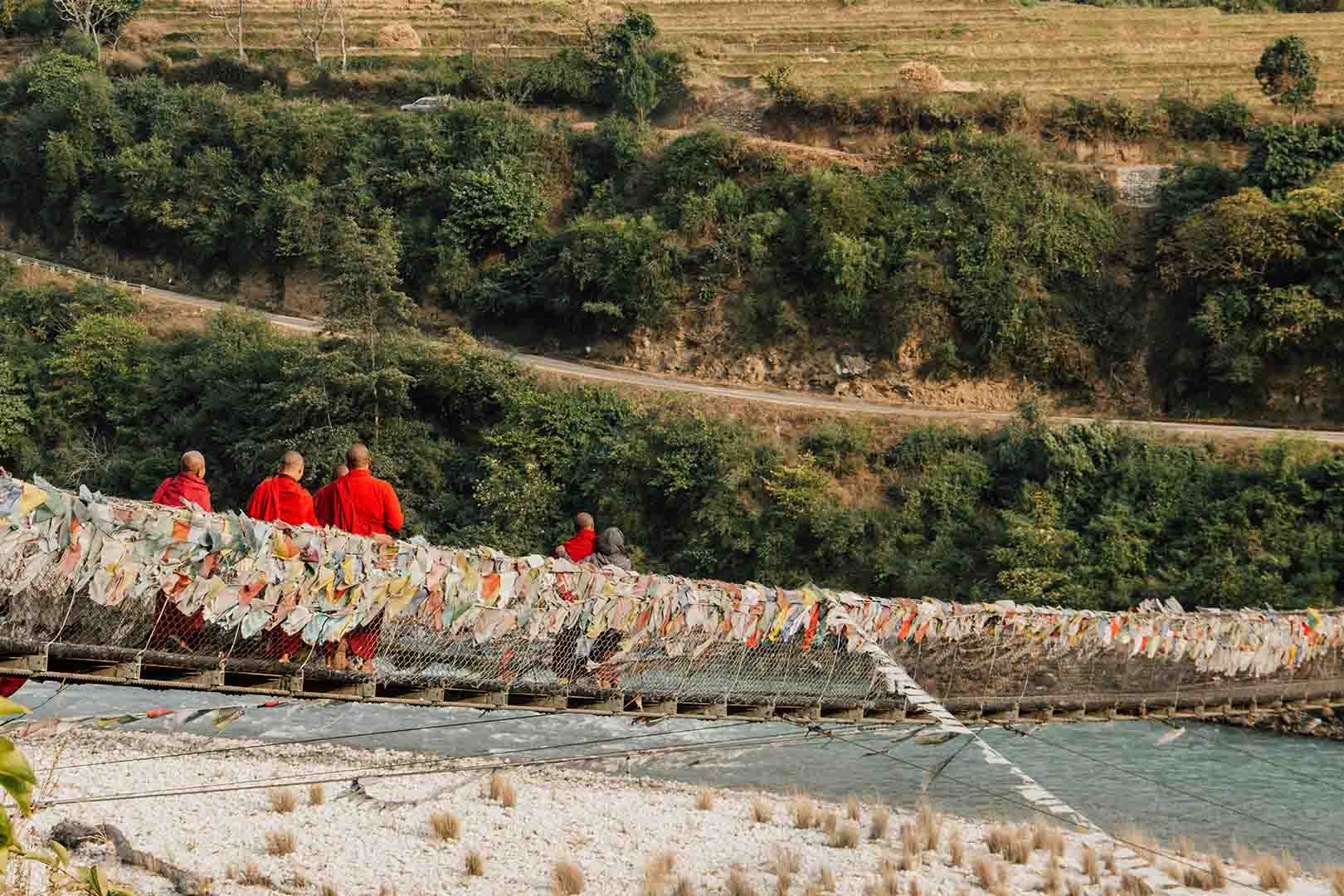Day 01: Arrive at Paro
Arrivel at Paro by Druk Air in the morning from Kathmandu. Your guide will meet you at the airport and take you to your hotel. You will begin your tour with a visit to the lovely Kyichhu Lhakhang (monastery, built 659 A D). Take your time to see the numerous inner temples. Drive along the river and head back to the town to sample local cuisine at a popular restaurant. After lunch, head across the valley to visit the magnificent Ta Dzong – a 17th Century circular structure, which was a watchtower once and now houses the National Museum of Bhutan. Various rare collection of artefacts and antiques are on display at the Museum, spanning six floors. Walk down the winding footpath to visit the beautiful Paro Rinpung Dzong (fortress), built in 1646. Walk across the traditional wooden bridge to the town and take a stroll and explore the small Paro town. Overnight at Paro.
Day 02: Drive to Haa Valley
After breakfast, you willmake your way to the beautiful Haa valley, on the other side of the mountain, for a day trip. You will drive along the picturesque winding road to Chele-la Pass (3810m), where on a bright day, you will enjoy a spectacular view of Mt.Jhomolhari and Mt. Jichu Drake in the distance. Drive down the mountain to the secluded Haa valley and the small town, which was until recently, rarely visited by foreigners. You can pack a picnic lunch to enjoy by the river or sample local cuisine at the few local restaurants. Visit the lovely monasteries called the Lhakhang Karpo (white temple) and Lhakhang Nagpo (black temple). We can arrange for you to visit a farmhouse and see Bhutanese rural life up-close. In the late afternoon, slowly make your way back to Paro. Overnight at Paro.
Day 03: Visit Taktsang Monastery and return Paro
Today, you will make your way to the base of the mountain to begin your hike to visit the magnificent Taktsang Monastery (Tiger’s Nest) that clings dramatically on a huge rock cliff, 900 m above the valley. According to the legend, Guru Rinpoche or Padmasambhava, who spread Buddhism across the entire Himalayas is said to have flown here in the Eighth Century on the back of a Tigress, and meditated for three years in a small cave where the main shrine of the monastery stands today. The 2-3 hours easy hike (each way) takes you along winding footpaths and through pine forests with spectacular views of the wide valley below. Enjoy lunch at the Cafeteria with the breathtaking view of the Monastery in the background. In the evening, walk in the small Paro town and visit some of the handicraft shops and interact with the people. Overnight at Paro.
Day 04: Fly from Paro to Bumthang
Early morning, you will drive to the Paro Airport to catch the domestic flight to Bumthang, which will take about half an hour. Welcome to the beautiful valley of Bumthang. A traveller’s delight, Bumthang valley houses some of the most revered and ancient monasteries in the country, dotted across the sprawling valley. Begin your tour with a visit to the beautiful Jakar Dzong, perched on a hilltop. Make way across the valley to visit the beautiful seventh century built Jambay Lhakhang and the beautiful three temples of Kurjey Lhakhang. Take a short hike or drive across to visit the 16th Century Tangbi Goemba. The sprawling valley also provides plenty of trails for easy hikes and excursions. Overnight at Bumthang.
Day 05: Day trip to Ura Village
Today, you will go on a day trip to the picturesque village of Ura. The drive is pleasant with fantastic views all along the way. Visit the lovely Ura monastery situated in the heart of the village with narrow streets of cobbled stones and clustered houses. Make your way to see the popular Rubthang Watermill used to grind the buckwheat, staple diet of the valley. On the way back, visit Mebar Tsho (the Burning Lake), one of the most revered pilgrimage sites in Bhutan. In the evening, visit a farmhouse and enjoy local cuisine for dinner with the host family. Overnight at Bumthang.
Day 06: Drive to Phobjikha
After breakfast, drive to the charming valley of Phobjikha, 193 km away. Bumthang is also famous for the local textile called yathra – woven from sheep and yak wool. On the way, you will make a brief stopover at Zugne village in Chumey valley to visit these yathra factories and handicraft shops where you will see local women weavers using back-strap and pedal looms to weave these woollen fabrics. You will pass the village of Getsa where they grow wheat, barley and potatoes besides sheep rearing. You will then slowly cross Yotong La pass (3551m) to continue your journey to Trongsa. In Trongsa, visit the magnificent Trongsa Dzong, the largest dzong in the country, which sits on a low ridge. Pop in at the Museum which is housed in the historical 17th Century Ta Dzong. Continue your journey to Phobjikha, passing along villages. Overnight at Phobjikha.
Day 07: Explore the Phubjikha Valley
Welcome to the charming valley of Phobjikha, one of the three winter roosting grounds in the country for the endangered black-necked cranes, who fly in every winter from far north to escape the bitter cold. Begin your tour of the valley with a visit to the small Crane Observation Centre to learn more about the cranes. There are some binoculars and a telescope available to view the cranes grazing in the marshy valley below. After lunch, visit the lovely 17th Century Gangtey Monastery and the surrounding village and meet the locals.
Later in the afternoon, take a hike, following one of the numerous paths to explore the valley around. Overnight at Phobjikha (Gangtey)
Day 08: Leave for Punakha
After breakfast, leave for Punakha, 70 km away. You will pass through several villages along the way. This part of the east-west highway is under renovation, so the road can be a little rough. But you will take your time and drive slowly. Driving along the river, you will soon come to the old town of Wangduephodrang. The new town of Bajothang is in the valley below. You will see the Wangduephodrang Dzong which is under renovation after a fire destroyed it in 2012. Following the road along the river, you will come upon the small roadside town of Lobesa. Here, you will do a small detour to visit the famous Chimi Lhakhang (monastery) which sits snugly on a hilltop amidst paddy fields and a small village. The 15th Century monastery is also known as the ‘Temple of Fertility’ dedicated to Lama Drukpa Kuenley, who is also known as the ‘Divine Madman’. Spend some time at the monastery and discover the fascinating stories of the eccentric Lama who used unconventional and often outrageous methods to realise his teachings. Continue a short drive along the river to Punakha. Overnight at Punakha.
Day 09: Explore Punakha Dzong
In the morning, you will drive past the lovely 17th Century Punakha Dzong, which sits on the confluence of Mo Chu (female) and Pho Chu (male) rivers with their distinct blue and green appearances. The popular Punakha Drubchen (Buddhist prayer rituals) will be underway and where you will also attend the three-day Punakha Festival, which will begin from tomorrow. Take a short drive down the valley to the suspension bridge, from where you will cross the bridge on foot to hike up to visit the lovely Khamsum Yuelley Chorten (stupa) which sits atop a hill overlooking the Punakha valley. The stupa was built by The Queen Mother for peace and harmony in the country and the rest of the world. It is an easy hike through paddy fields and up along a meandering footpath amidst the blue-pine forest. The view of the Punakha valley from the Chorten is a spectacular sight. In the afternoon, explore the near by villages and you can take a hike to explore the valley. Overnight at Punakha.
Day 10: Immerse in Punakha Tshechu Festival
After breakfast, you will make your way to the Dzong to attend the popular Punakha Tshechu (Festival) which begins today. The three-day festival takes place in the open courtyard in the Dzong. Tshechus are grand events where entire communities come together to witness religious mask dances and receive blessings. It is also the time when families from nearby villages take break from regular farm work to socialise and enjoy their time together. In addition to the mask dances, Tshechus also include colourful Bhutanese dances and other forms of entertainment. Monks and laymen perform masked dances and every mask dance performed during a Tshechu has a special meaning depicting ancient events and teachings in Buddhism. Mingle with the crowd dressed colourfully and soak in the enchanting festivity around. You can stay at the festival for the whole day. You can watch an archery match, the national sport of Bhutan, if one is taking place, next to the Dzong. Overnight at Punakha.
Day 11: Arrive at Thimphu
After breakfast, make your way to the Dzong to attend the second day of the Festival in the morning. There will be more mask dance performances at the Festival and you can spend the morning mingling with the crowd. After lunch, you will make your way slowly to Thimphu, the capital city – 70km away. You will pass through several villages along the way before you begin your climb up the mountain.
Stop over at Dochhu La pass (3,050m) to enjoy the panoramic views of the Himalayas and the beautiful 108 Druk Wangyal Chortens (stupa). Enjoy your afternoon tea at the Dochhu la café before continuing your journey to Thimphu. As you descend to the Thimphu valley, make a small detour to visit the Simtokha Dzong, perched on a small hillock. It is the oldest Dzong in the country which was built in 1629.
In the evening, take a stroll in the city centre. Overnight at Thimphu.
Day 12: Explore Thimpu
Today, you will visit some of the well-known landmarks in the city. In the city centre, you will find the traffic policeman directing the traffic flow instead of traffic signals. It is said that Thimphu is the only capital in the world without traffic signals. Make your way across the town to visit the Zorig Chusum Institute, which literally translates as the thirteen (chusum) arts and crafts (zorig) of Bhutan. You will meet the talented artists and students at work. Spend time learning about Bhutanese arts and crafts at the Institute. Just a short walk away is the National Institute for Traditional Medicine. The Institute produces indigenous medical products from herbs, minerals, gemstones and animal products. Some of the herbs are rare plants collected high in the Himalayas. You will then visit the lovely Folk Heritage Museum. The Museum is located in an old rambling traditional house showcasing the rural Bhutanese life of the past century. You can enjoy your lunch at the restaurant at the Museum which serves authentic Bhutanese food. After lunch, make your way to the Jungshi Paper Factory which produces Bhutanese traditional handmade paper made from the daphne plant. Drive past the only public golf course in the country, on your way to the Trashichho Dzong– the 17th Century Dzong houses the offices of the Central Government and the Monastic Body and also the Throne Room of His Majesty. In the evening, take a short drive to Kuensel Phodrang to see the Buddha Dordenma – the tallest and largest Buddha statue in the world. The view of the brightly lit city below is beautiful. Overnight at Thimphu.
Day 13: Drive to Takin Nature preserve
After breakfast, take a short drive to the Takin Nature Preserve to see the takins. You will see these unique animals up close in the morning when they gather to feed near the fence. Takin, with a head of a goat and hooves of a cow, is unique to the Eastern Himalayas and is the national animal of Bhutan. On your way back, visit Simply Bhutan – the ‘living museum’ that depicts Bhutan’s ancient cultural heritage. The Museum is an example of the old world charm where you can experience the rural Bhutanese life of the past centuries.
Just a short walk away is the Memorial Chorten (stupa), built in 1974 to honour the memory of the third King, Jigme Dorji Wangchuck. You will see elderly people praying and circumambulating the stupa. After lunch, take an enjoyable drive along the river to see the Tango and Cheri Monasteries. The 12 km drive takes you along the Wangchu river, past the magnificent Tashichho Dzong. It is a pleasant short drive, unfolding some spectacular scenery along the way. If you would like, you can take a short hike to visit one of the monasteries.
Overnight at Thimphu.
Day 14: Head towards Paro
After breakfast, make your way to Paro, an hour’s drive from the capital. You will pass by several villages and settlements. Just a short drive after Chuzom confluence, you will come upon the charming Tamchhog Lhakhang, situated across the river. The monastery was built in the early 15th Century by the great master architect and Yogi Thangtong Gyalpo (1385-1464) who also built many iron bridges throughout Bhutan and Tibet. Take a short walk across the legendary chain-link bridge to hike up to the ancient monastery. A 100-year old mandarin tree stands tall in the courtyard and the monastery is adorned with ancient murals on the walls. Continue your drive to Paro along the river. After lunch, drive along the river to see the ruins of the Drukgyal Dzong (built in 1647 by Zhabdrung Ngawang Namgyal, the fortress that saw many a battles being fought between the Drukpas and the Tibetan invaders from the north). On a clear day you will see the magnificent Mt. Jhomolhari (7314m) in the distance. Spend the evening at leisure. Overnight at Paro.
Day 15: Final Departure
In the morning, leave for the airport to catch your flight back to Kathmandu, Nepal. Your guide will see you off at the airport.

